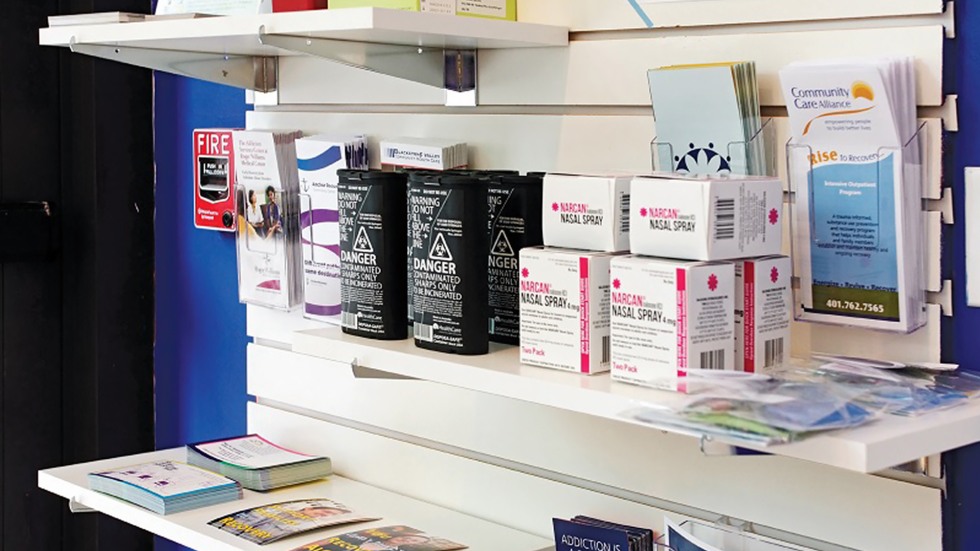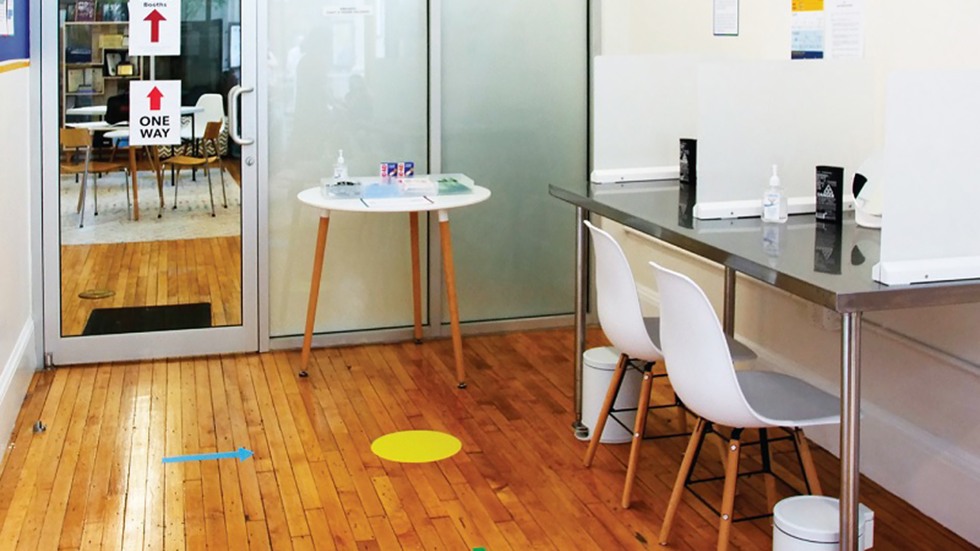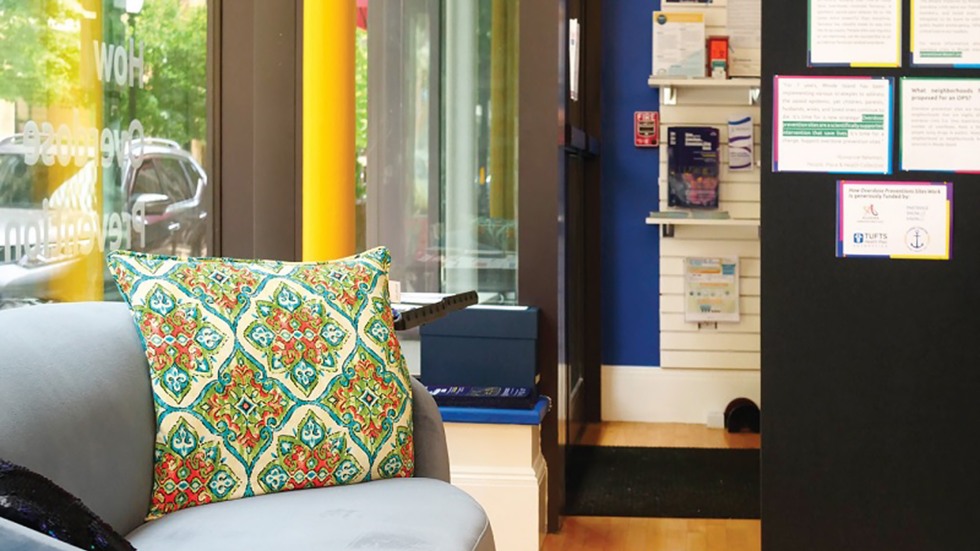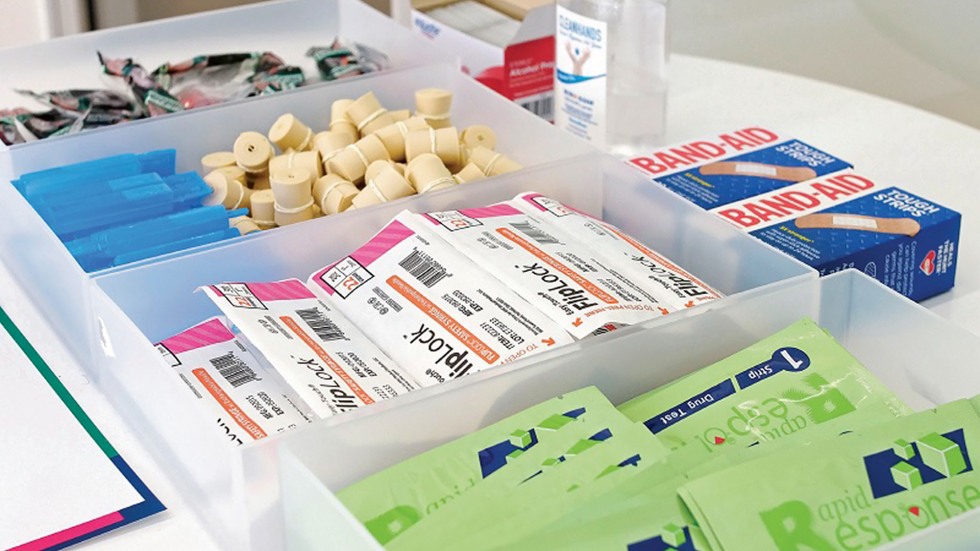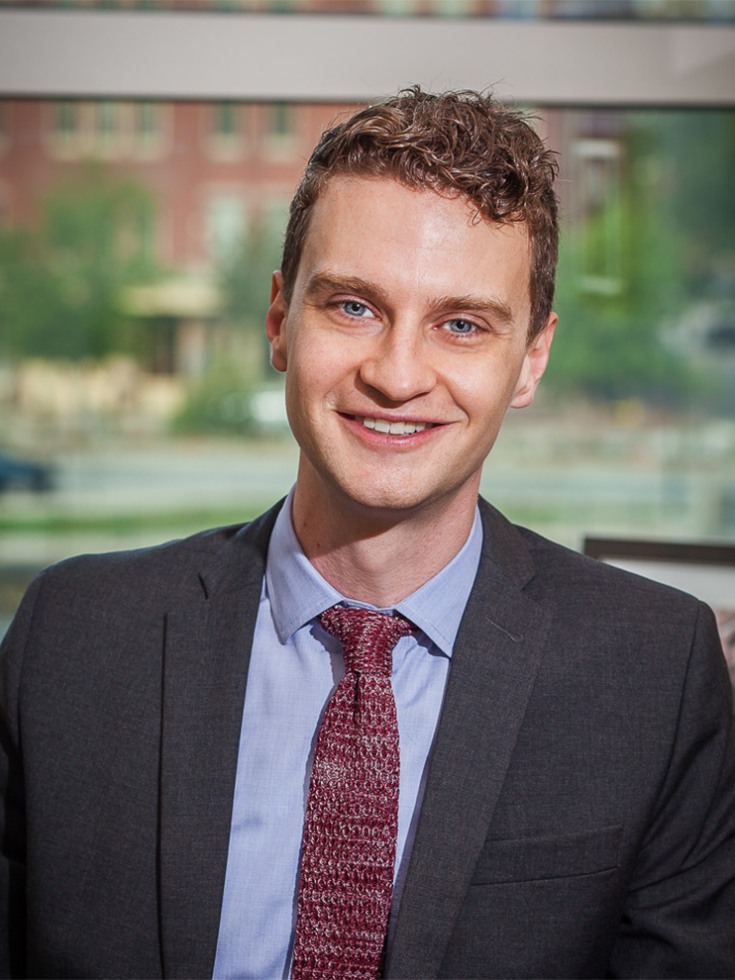The front line in one of the most important battles in public health is sandwiched between a luxury hotel and a shuttered restaurant in Providence’s Downtown Historic District. Through the tall windows of a narrow storefront, visitors can get a glimpse of the future: a model Harm Reduction Center (HRC), where people who use opioids and other controlled substances can bring them to consume, protected from the risk of overdose. It is a bold project, both innovative and overdue; despite compelling evidence for its impact from other countries, it would be the first site in the US to have state approval.
The model HRC is an example of the Brown School of Public Health’s efforts to bring evidence to bear on the most pressing public health challenges. “The pandemic has made it clear that many of our current approaches in Public Health no longer work, not in the COVID-19 pandemic and not in the overdose epidemic and not on other pressing issues such as climate change, migration, and structural racism,” says Ashish Jha, dean of the Brown University School of Public Health. “And this is not a shocking statement for anyone who has been in the trenches. The question is, what are the barriers to change?”
Efforts to address the overdose epidemic face a range of barriers, from stigma to the ongoing coronavirus pandemic. After decades of growth in the prescription and extra-medical use of opioids, driven by unscrupulous pharmaceutical marketing and the struggles of America’s working class, among other factors, millions of Americans now suffer from dependency on these substances—with devastating impacts on both individuals and their wider communities as addiction can drive people from employment, undermine relationships, and pose an ever present risk of overdose and death. With increasing availability of powerful synthetic opioids, overdoses have become both more frequent and more fatal. More than 100,000 Americans died from overdoses during the last 12 months, including nearly 400 people in Rhode Island, as this complex public health challenge has been exacerbated by the isolation and economic upheaval of the pandemic.
